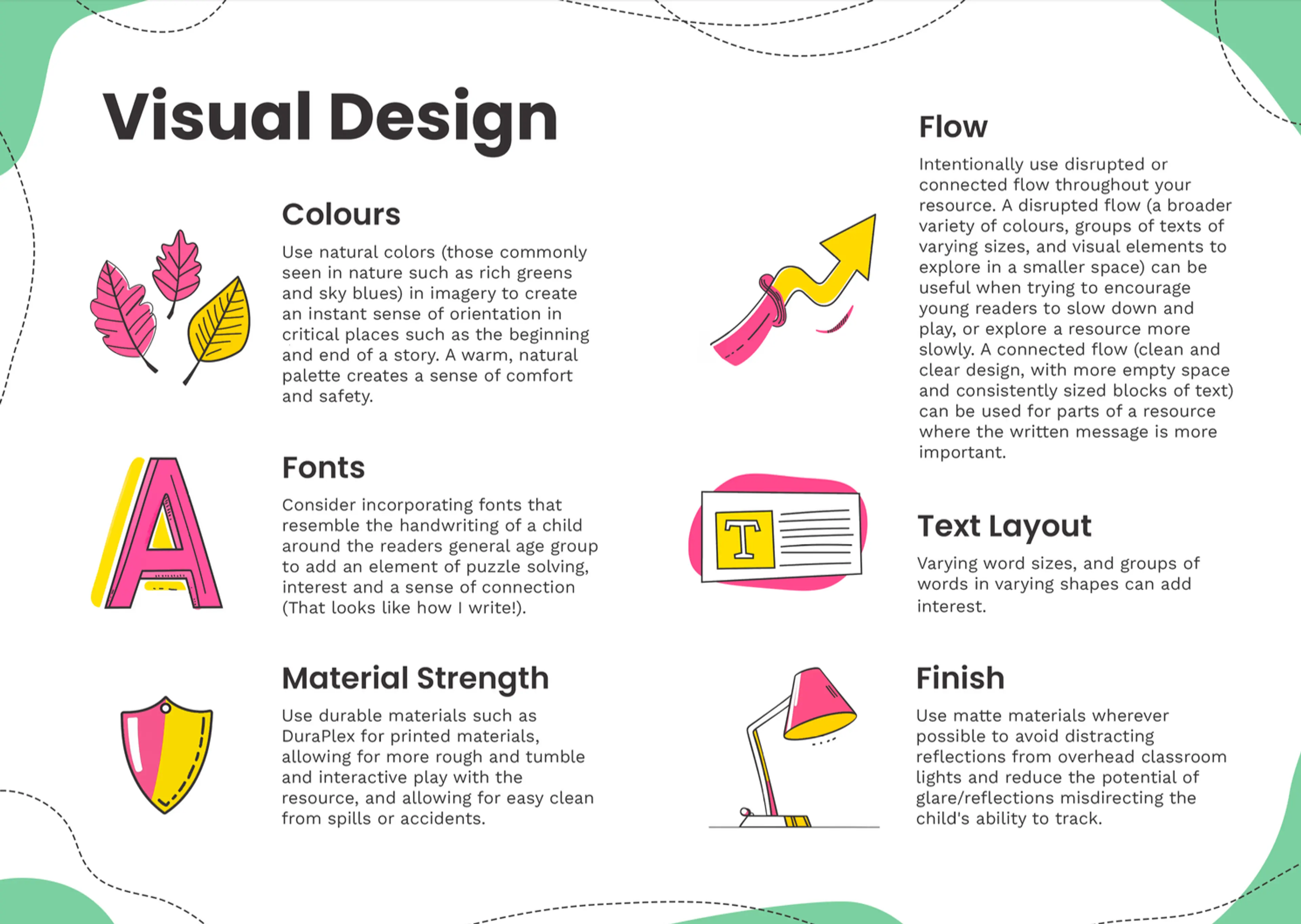
Story design
Shorter content
Use shorter stories or sections to accommodate attention spans and provide a quicker sense of accomplishment.
Single central character
Focus on narratives with a single main character to reduce the cognitive load of tracking multiple characters and plotlines.
Hero's journey narrative
Utilise the Hero's Journey framework to tap into universal themes of celebration, working together and hope, which can be relatable for children.
Relatable scenarios
Create stories and examples that reflect the everyday experiences of children with ADHD, such as going to school and time with whānau, fostering a sense of connection.
Avoid win/lose scenarios
Refrain from creating resources that heavily emphasise competition or "win/lose" outcomes, such as board games or other games with winners and losers, as these can be a source of stress.
Tuakana-teina
Create resources that could allow for the expression of the concept of a tuakana-teina relationship. This could be a partnership between older and younger, or more and less experienced children, to help each other (such as a book with a broad reading age, or questions that children can answer despite their age or experience).
Character design
Know your character
As a starting point when considering the development of a character, explore the following areas:
• What is their name?
• What do they look like?
• How do they dress?
• What is their family dynamic?
• Who are their friends?
• What do they hope for?
• What do they struggle with?
• What are their favourite things?
• What do they dislike?
• What matters most to them?
Relatability
Create characters to provide multiple points of identification for readers (such as where they live, what their home life is like, where they go, how they usually dress).
Positive influence
Create characters that role model pro-social behaviours.
Collaborate
If possible, iterate potential characters in partnership between illustrators, target readers and educators/caregivers.
Supporting cast
Consider the supporting characters who play a significant role in the main character's journey. How do they journey together?
Visual design
Colours
Use natural colours (those commonly seen in nature such as rich greens and sky blues) in imagery to create an instant sense of orientation in critical places such as the beginning and end of a story. A warm, natural palette creates a sense of comfort and safety.
Fonts
Consider incorporating fonts that resemble the handwriting of a child around the readers general age group to add an element of puzzle solving, interest and a sense of connection (that looks like how I write!).
Material strength
Use durable materials such as DuraPlex for printed materials, allowing for more rough and tumble and interactive play with the resource, and allowing for easy clean from spills or accidents.
Flow
Intentionally use disrupted connection flow throughout your resource. A disrupted flow (a broader variety of colours, groups of texts of varying sizes, and visual elements to explore in a smaller space) can be useful when trying to encourage young readers to slow down and play, or explore a resource more slowly. A connected flow (clean and clear design, with more empty space and consistently sized blocks of text) can be used for parts of a resource where the written message is more important.
Text layout
Varying word sizes and groups of words in varying sizes can add interest.
Finish
Use matte materials wherever possible to avoid distracting reflections from overhead classroom lights and reduce the potential of glare/reflections misdirecting the child's ability to track.
Printing considerations
Colour checks
Colour to print considerations: To verify colour accuracy from screen to print, multiple test prints are often required.
Interior paper
For interior pages, the use of 157gsm silk matte DuraPrint paper offers a high-quality feel while reducing glare, which is particularly beneficial for
readers with ADHD.
Endpapers
140gsm offset paper can be used for the endpapers that serve as a
transition between the cover and the main content. This contributes to
additional durability at key stress points.
Page size
A4 size (210x297mm) provides ample space for large, clear illustrations, which are important for maintaining attention for children with ADHD.
Binding
Hardcover binding with case binding offers several advantages that are particularly relevant for a book designed for children with ADHD.
• Exceptional durability, ensuring that the book can withstand frequent use and potentially rough handling.
• The hardcover binding allows the book to lay flat when open, which facilitates shared reading experiences. This feature is particularly beneficial for children with ADHD who may engage in reading activities with parents, teachers, or loved ones.
• The ability to lay the book flat reduces physical distractions and allows for a more comfortable and focused reading posture.
• The section-sewn binding further enhances the book's durability by
ensuring that pages remain securely attached.
• This is especially important for books that may receive rougher handling, as it prevents pages from coming loose or falling out, which could be particularly distracting or discouraging for a child with ADHD.
Content and language
Language
Use simple, direct language to improve comprehension.
Characters
Include characters who demonstrate perseverance and problem-solving skills.
Positivity
Highlight the strengths and positive attributes of individuals with ADHD.
Questions
Include questions throughout the resource to encourage reflection and engagement with the material.
Feedback
Where possible, gather feedback from children with ADHD and educators to refine and improve the resource.
Activity
Incorporate activities that involve physical engagement and interaction.

